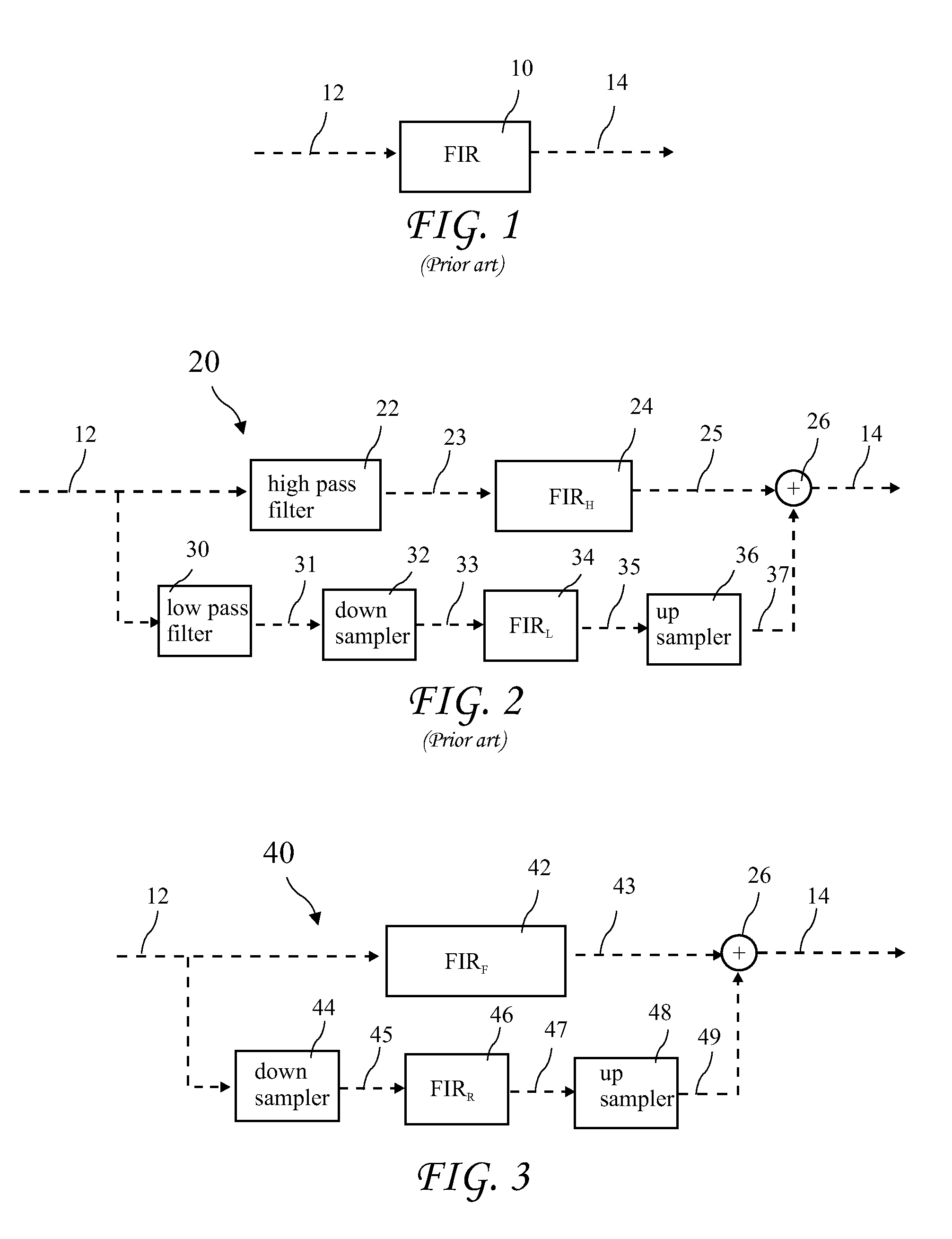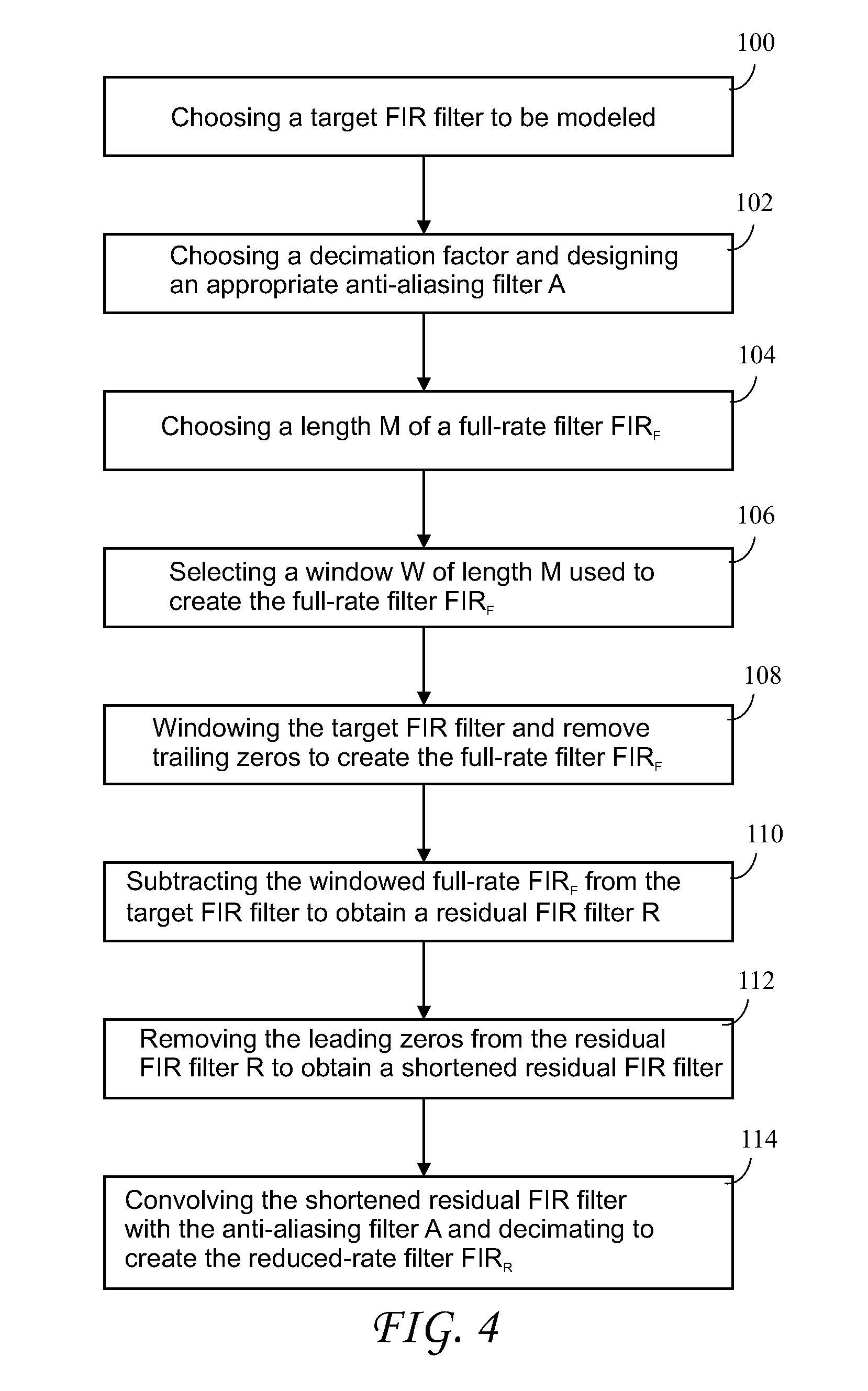Multi-rate implementation without high-pass filter
a multi-rate implementation and high-pass filter technology, applied in the field of digital signal filtering, can solve problems such as constant group delay, and achieve the effect of reducing computational requirements and eliminating high-pass filtering
- Summary
- Abstract
- Description
- Claims
- Application Information
AI Technical Summary
Benefits of technology
Problems solved by technology
Method used
Image
Examples
Embodiment Construction
[0032]The following description is of the best mode presently contemplated for carrying out the invention. This description is not to be taken in a limiting sense, but is made merely for the purpose of describing one or more preferred embodiments of the invention. The scope of the invention should be determined with reference to the claims.
[0033]A prior art digital filter with a single Finite Impulse Response (FIR) filter (the target FIR filter) 10 applied to an input signal 12 to produce a filtered signal 14. The Target FIR filter 10 must perform operations at the high sample rate of the input signal 12 and also be of sufficient length to provide accurate filtering to low frequency components in the input signal. The resulting processing may require a very large number of operations at the high sample rate.
[0034]A prior art multi-rate digital filter 20 with two parallel FIR filters, FIRH 24 and FIRL 34, applied to the input signal 12 is shown in FIG. 2. The input signal 12 is proce...
PUM
 Login to View More
Login to View More Abstract
Description
Claims
Application Information
 Login to View More
Login to View More - R&D
- Intellectual Property
- Life Sciences
- Materials
- Tech Scout
- Unparalleled Data Quality
- Higher Quality Content
- 60% Fewer Hallucinations
Browse by: Latest US Patents, China's latest patents, Technical Efficacy Thesaurus, Application Domain, Technology Topic, Popular Technical Reports.
© 2025 PatSnap. All rights reserved.Legal|Privacy policy|Modern Slavery Act Transparency Statement|Sitemap|About US| Contact US: help@patsnap.com



